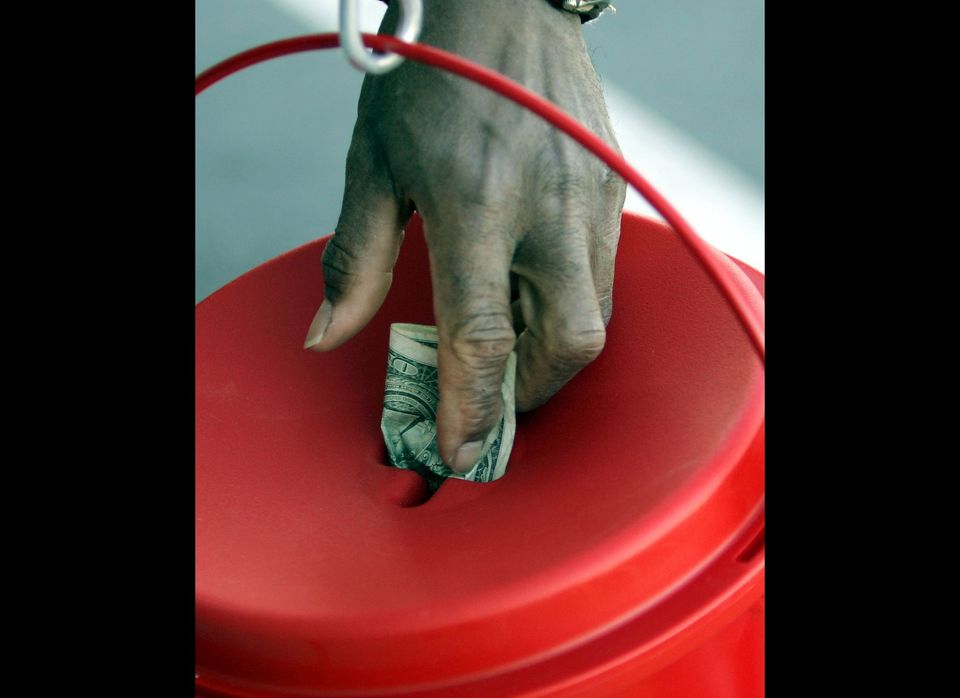
By Linda Stern
NEW YORK, Oct 23(Reuters) - If you're waiting until Thanksgiving kicks off the season of goodwill, stop waiting. Halloween is a more appropriate time to plan your charitable strategy for the rest of the year.
That may be especially true in 2013, when sizeable stock market gains and new taxes on the wealthy are pushing some people to increase their philanthropy and to do so in a strategic way.
Charities are squeezed, and were set back at least temporarily when the federal government shutdown stopped fundraising campaigns in the agencies. Foodbanks and other nonprofits that focus on helping the poor "are overwhelmed with demand" says Stacy Palmer, editor of the Chronicle of Philanthropy.
The trade publication is projecting that the top 400 charities in the United States will increase their collections only 1 percent this year; that means they won't even keep up with inflation.
For donors, there are more reasons to focus this year. New taxes on individuals who earn more than $200,000 and joint filers earning more than $250,000 mean that more people may want to give gifts that are large enough to keep them below those levels. And those who have had a nice run in the stock market may have appreciated assets that they can tap to make the most of their gifts.
Finally, there are significant changes in the way people give and the kinds of organizations they support. United Way Worldwide, while still the single charitable organization that raises the most in the U.S., "is just treading water," says Palmer. The organization, which acts as an umbrella organization that passes money through to several other groups, raised $2.9 billion in 2012, still 16 percent below its 2007 levels.
In its place, smaller charities and personal charitable funds are picking up increased donations. They all require more legwork on the part of donors.
So, get an early start and think it through. Here's how to maximize the impact of your gifts now and through the end of the year.
- Causes first. The most important part of having a family charity strategy is deciding what issues you care about most. Don't choose too many, lest you spread your money too thinly and put your address on too many mailing lists. It's optimal to have two or three favorites - a medical charity, a school and an arts organization, for example. Check CharityNavigator.org, to make sure the charities you're considering are well managed and put donations to good use.
- Give away stock. If you have made sizeable gains on any securities this year (in taxable accounts, not counting those in tax-advantaged retirement accounts), it makes sense to use them as the gift. Here's why: You can deduct the full value of the securities you give away as charitable deductions, but the charity doesn't have to pay a capital gains tax when it sells the shares.
Say, for example, that you own $3,000 of a stock you've held at least a year and made $1000 on. If you sell it, you'll have to pay capital gains taxes, typically 15 percent (20 percent for top bracketeers.)If you sold the shares, you'd owe $150 in taxes and be able to donate (and deduct) a net of $2850 to charity. If you give the charity the shares to sell, they get the full $3,000, and you get the full deduction too.
- Consider a donor advised fund. These are charities, often run by large financial companies that enable donors to lock in their tax deductions for gifts, amass funds, and then dole them out to individual charities on their own schedule. "They are going gangbusters," says Palmer. Fidelity Charitable, for example, is now the second most popular U.S. charity and raised $3.3 billion in 2012, a gain of 89 percent over the previous year. Others are run by Charles Schwab Corp., Vanguard and T. Rowe Price Group Inc.
To set up your own donor-advised fund, you can open an account with one of those firms and feed it with shares of stocks or mutual funds. You will get a tax deduction for your contributions this year, but can take your time doling the money out to the charities of your choice once you've done your homework.
- Check out your community foundation. You can also set up a donor advised fund through your local community foundation, or contribute directly and see your money put to work in your own town or neighborhood. Ken Nopar, a Chicago consultant who helps donors plan their charitable strategies, suggests that people who give local also do on-site visits and volunteer for the charities they support. It helps cement their connection to the organization. (Disclosure: I was on the board of my small local community foundation for years, and am a fan.)
- Consider a charitable trust. There are more sophisticated charitable vehicles for folks giving away significant amounts of money, notes Carol Kroch, managing director at Wilmington Trust who counsels affluent clients who may be giving away a million dollars or more. Charitable trusts can be particularly useful for people who have large multi-year taxable gains in investments and who need the funds tied up in those securities for retirement income or a bequest. They can set up trusts to benefit charities and either take interest payments for themselves or let the charities reap the interest and take the principal back as a family bequest later. Set up properly, a charitable trust can be of great benefit to both the donor and the charity.

